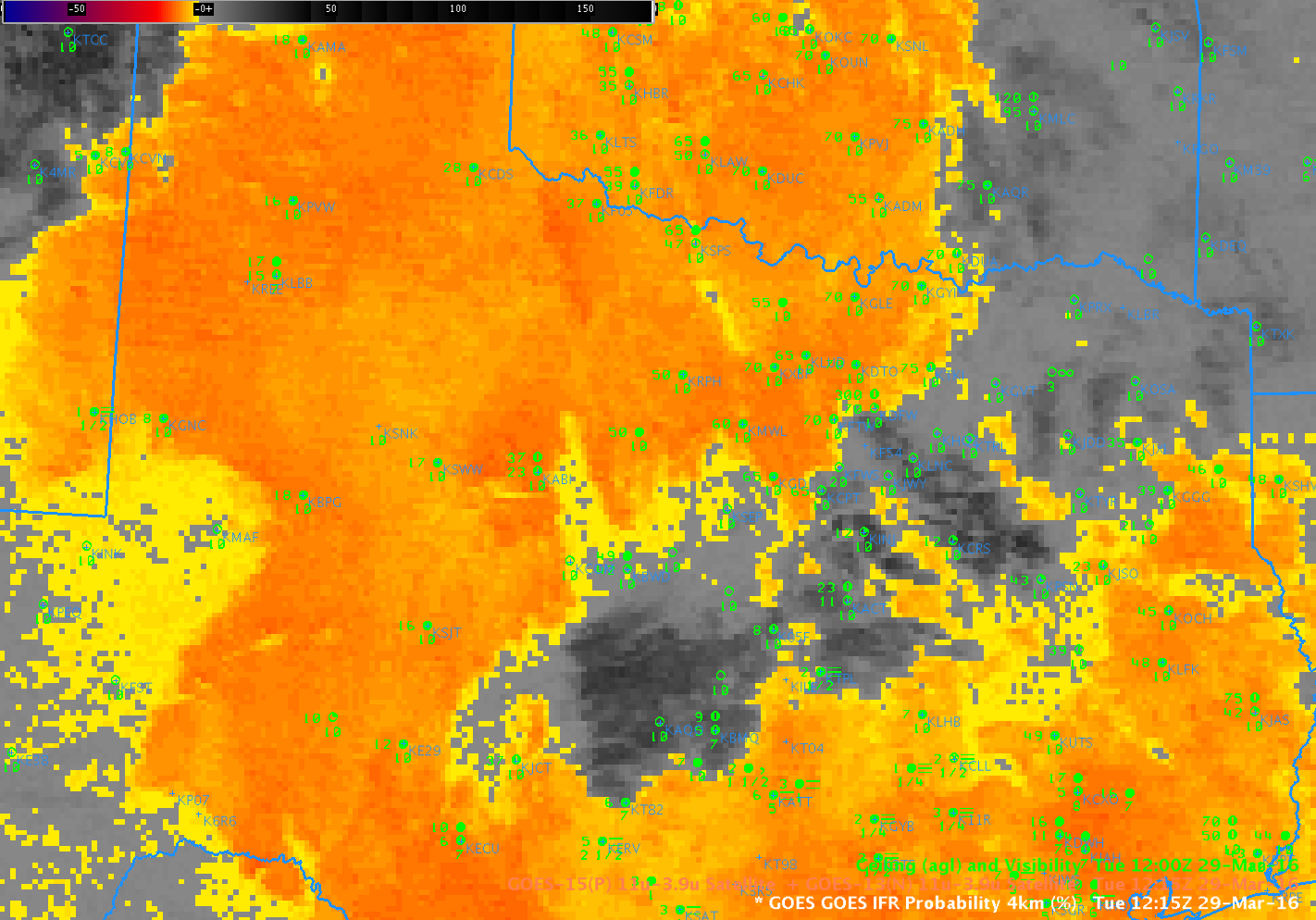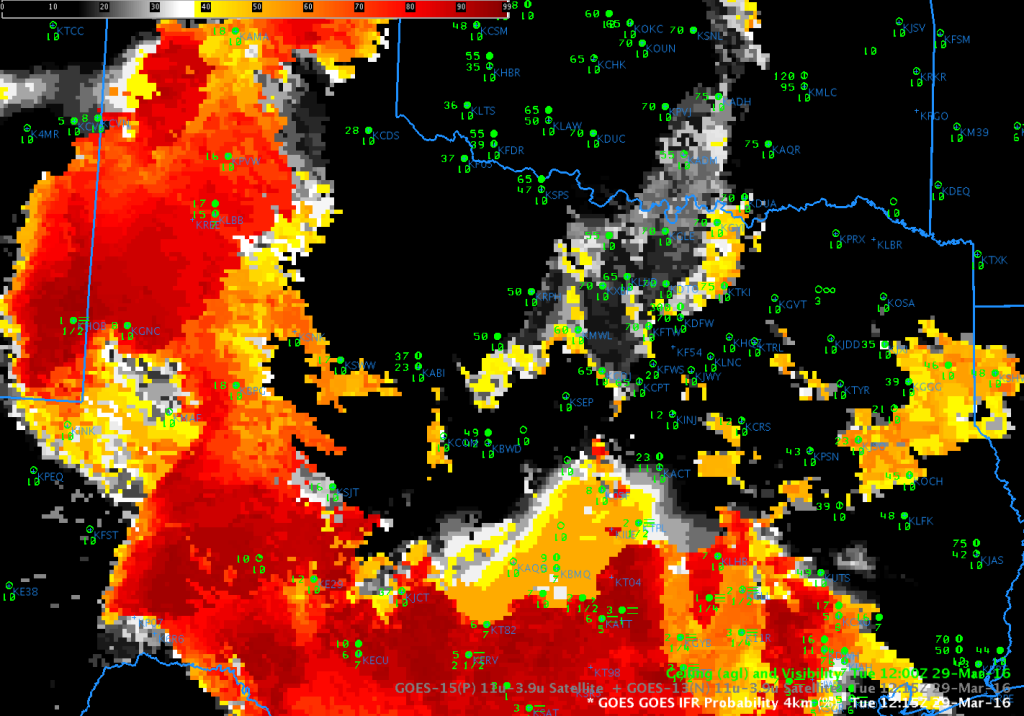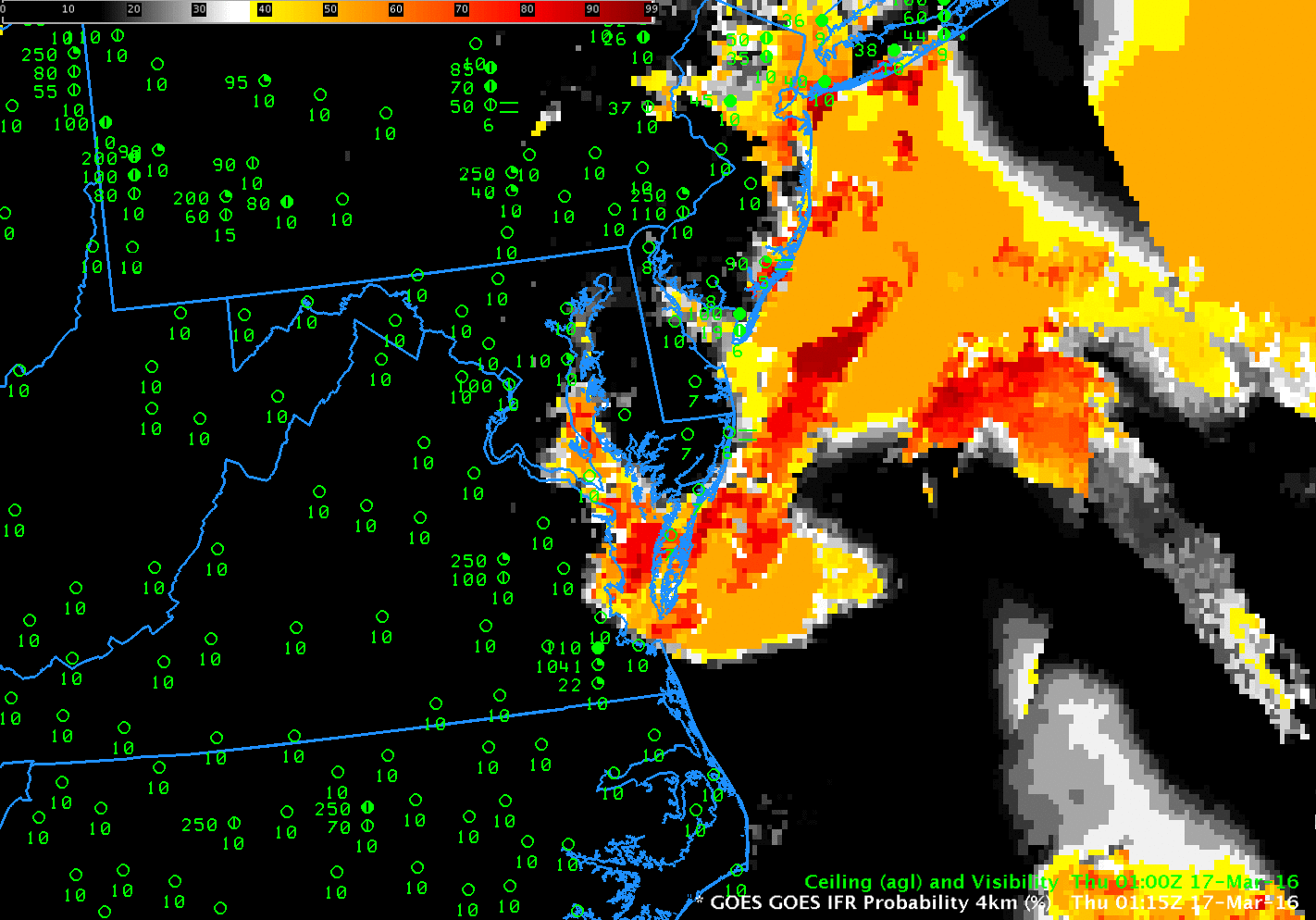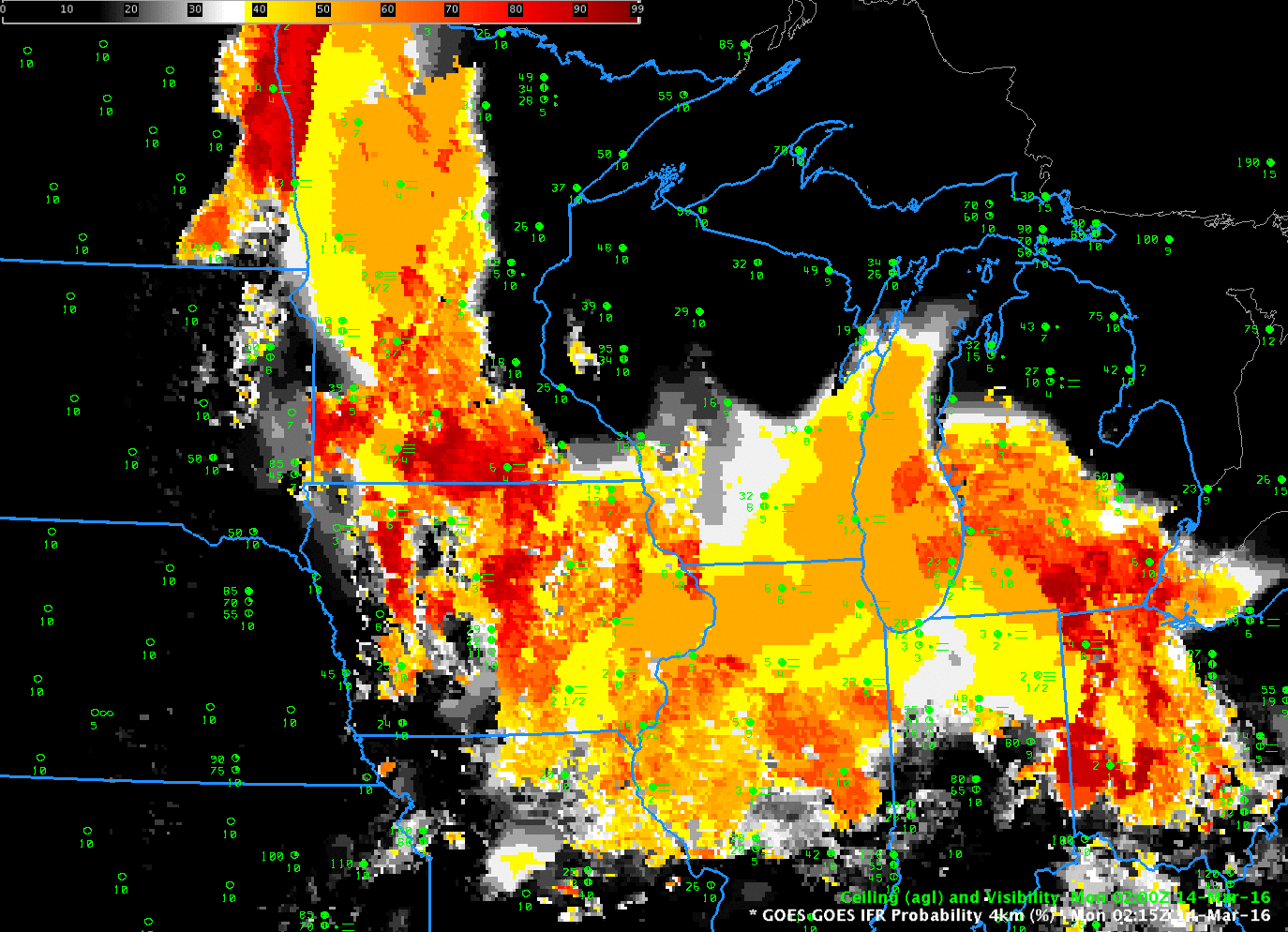
GOES-13 Brightness Temperature Difference (10.7 µm – 3.9 µm) at 1215 UTC on 29 March 2016 (Click to enlarge)
Consider the brightness temperature difference field above, from 1215 UTC on 29 March 2016. A strong signal that indicates water-based clouds extends from central Oklahoma to west Texas, and also from south Texas to west Texas. Are these water-based clouds obscuring visibilities at the surface? Over much of the region they are not. The Brightness Temperature Difference field gives information about the top of the cloud, but not the cloud base.
The GOES-R IFR Probability field for the same time, below, has screened out much of the region of mid-level stratus over Oklahoma and Texas. This can occur because IFR Probability fields include information from the Rapid Refresh Model. If that model does not indicated low-level saturation, IFR Probabilities will not be large. In the example shown, large values of IFR Probabilities are restricted to regions where IFR or near-IFR conditions are occurring.






